#Battle of Normandy
Text

Ground crew work on a P-47 “Miss Second Front” from the 368th FG, 9th Air Force at a makeshift airstrip in France following the Normandy invasion
151 notes
·
View notes
Text

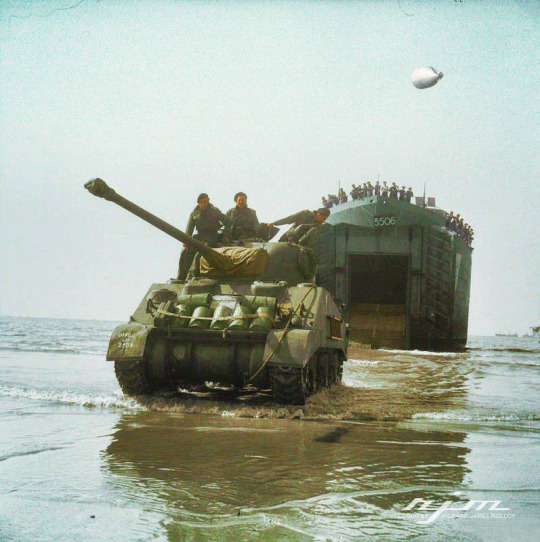
Un Sherman Firefly de la 22nd Armoured Brigade, 7th Armoured Division débarque d'un LST (Landing Ship Tank) sur Gold Beach – Opération Overlord – Calvados – Normandie – 7 juin 1944
Photographe : Sergent Laing - No. 5 Army Film and Photo Section, Army Film and Photographic Unit
©Imperial War Museums - B 5130
©Colorisation de RJM
#WWII#opération overlord#overlord#bataille de normandie#battle of normandy#7e division blindée GB#7th Armoured Division#22e brigade blindée GB#22nd Armoured Brigade#gold beach#calvados#normandie#normandy#france#07/06/1944#06/1944#1944
78 notes
·
View notes
Photo
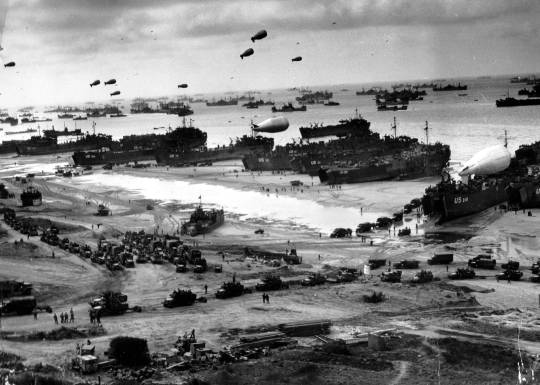
82 notes
·
View notes
Video
Battle of Normandy (June 6 - Mid July 1944) by Linh Yoshimura
Via Flickr:
A Douglas A-20 Havoc from the 416th Bombardment Group is operating on D-Day, June 6, 1944. (US Army)
40 notes
·
View notes
Text

"21 year old Navy Chief Motor Machinist's Mate Edward Hutton from Dayton, Ohio, USA, took his pet puppy, 'Swabby', along in the invasion craft for the Allied landings in France on June 6, 1944. Swabby is wearing a life preserver especially made by the crew of Eddie's ship.

Swabby couldn't be found after the Landingcraft had put 136 soldiers of the 82nd Airborne Division ashore. 'One of those dogfaces of the 82nd must have stolen him when we were all busy during the landing', Hutton later said.
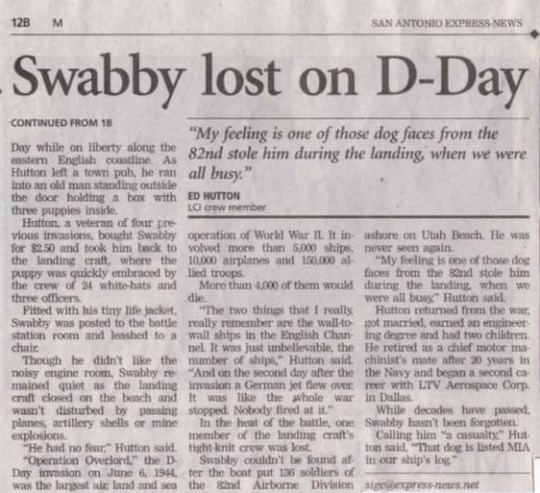

The puppy was listed as MIA on June 6th, 1944 on Utah Beach."
Imperial War Museum: OWIL 25488
source
Colorized by Piece of Jake: link
#Puppy#Dog#sailor#D-Day#United States Navy#U.S. Navy#US Navy#USN#Navy#World War II#World War 2#WWII#WW2#WWII History#History#Military History#Operation Overlord#Battle of Normandy#Normandy Invasion#Normandy#France#Europe Theater#June#1944#gif#colorized#colorized photo#MIA#my post
160 notes
·
View notes
Text
youtube
This is such a great sequence, I really love how the scene starts with individualized shots of Easy Company then widens to the planes taking off, then finally opens and we get an idea of the sheer scale of the Normandy forces.
Also, notice how they went from late afternoon/evening, to the dark interior of a airplane, to an exterior nightime shot and there's no need to adjust the screen brightness.
#history#WWII#D-Day#operation overlord#Battle of Normandy#normandy landings#Band of Brothers#Youtube
9 notes
·
View notes
Text

June 6th, 1944 (Photographer: Robert F. Sargent)
“American invaders spring from the ramp of a Coast Guard-manned landing barge to wade those last perilous yards to the beach of Normandy. Enemy fire will cut some of them down. Their ‘taxi’ will pull itself off the sands and dash back to a Coast Guard manned transport for more passengers.”
4 notes
·
View notes
Text
A Tapestry for Bayeux
George Starbuck
I Recto
Over the
seaworthy
cavalry
arches a
rocketry
wickerwork:
involute
laceries
lacerate
indigo
altitudes,
making a
skywritten
filigree
into which,
lazily,
LCTs
sinuate,
adjutants
next to them
eversharp-
eyed, among
delicate
battleship
umbrages
twinkling an
anger as
measured as
organdy.
Normandy
knitted the
eyelets and
yarn of these
warriors’
armouring—
ringbolt and
dungaree,
cable and
axletree,
tanktrack and
ammobelt
linking and
opening
garlands and
islands of
seafoam and
sergeantry.
Opulent
fretwork: on
turquoise and
emerald,
red instants
accenting
neatly a
dearth of red.
Gunstations
issue it;
vapourtrails
ease into
smoke from it—
yellow and
ochre and
umber and
sable and
out. Or that
man at the
edge of the
tapestry
holding his
inches of
niggardly
ground and his
trumpery
order of
red and his
equipage
angled and
dated. He.
II Verso
Wasting no
energy,
Time, the old
registrar,
evenly
adds to his
scrolls, rolling
up in them
rampage and
echo and
hush—in each
influx of
surf, in each
tumble of
raincloud at
evening,
action of
seaswell and
undertow
rounding an
introvert
edge to the
surge until,
manhandled
over, all
surfaces,
tapestries,
entities
veer from the
eye like those
rings of lost
yesteryears
pooled in the
oak of your
memory.
Item: one
Normandy
Exercise.
Muscle it
over, an
underside
rises: a
raggedy
elegant
mess of an
abstract: a
rip-out of
kidstuff and
switchboards, where
amputee
radio
elements,
unattached
nervefibre
conduits,
openmouthed
ureters,
tag ends of
hamstring and
outrigging
ripped from their
unions and
nexuses
jumble with
undeterred
speakingtubes
twittering
orders as
random and
angry as
ddt’d
hornets. Step
over a
moment: peer
in through this
nutshell of
eyeball and
man your gun.
#poetry#bayeux tapestry#war#norman conquest#battle of normandy#WWII#george starbuck#resonance#remembrance#imagery#borrowings#navy#attack#D-Day
1 note
·
View note
Text
Join the Battle of Normandy in new air war DLC for IL-2 Sturmovik
Join the Battle of Normandy in new air war DLC for IL-2 Sturmovik
(more…)

View On WordPress
0 notes
Text

The Battle of Hastings by Pierre Joubert
1982 Au temps des Vikings - Les Normands de Guillaume le Bâtard (1982 Viking Age - William the Bastard's Normans)
#pierre joubert#art#william the conqueror#battle of hastings#normans#anglo saxons#norman#anglo saxon#vikings#viking age#england#normandy#viking#france#history#europe#european#medieval#middle ages#knights#knight#cavalry
53 notes
·
View notes
Text

The last invasion of Britain was the Battle of Hastings, 957 years ago
#Battle of Hastings#17 October 1066#Duke of Normandy#UK#King Harold#King William I#Norman conquest#English history#East Sussex#William the Conqueror#Saxon defeat#On this day
76 notes
·
View notes
Text
Private Collins plays with the local village cat, Snowball, in Normandy, 1944.
75 notes
·
View notes
Photo
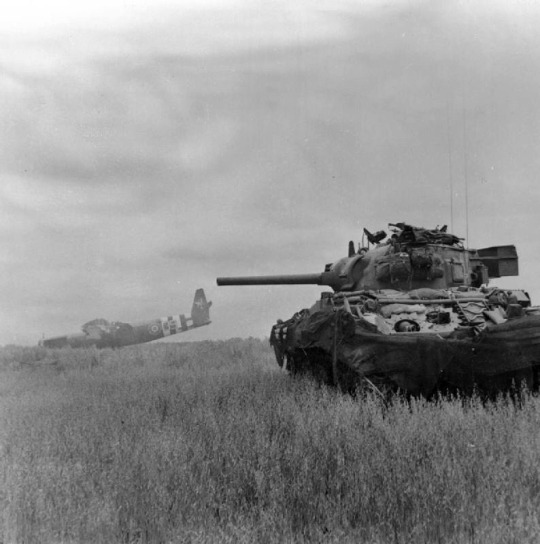
Sherman DD amphibie du 13th/18th Royal Hussars (Régiment de cavalerie britannique) en action dans le secteur de Ranville - Bataille de Normandie - Ranville - Calvados - Normandie - France - 10 juin 1944
Photographe : Sergent Christie - No. 5 Army Film and Photo Section, Army Film and Photographic Unit
©Imperial War Museums - B 5348
#WWII#Opération Overlord#Overlord#Bataille de Normandie#Battle of Normandy#Armée britannique#British Army#13th/18th Royal Hussars#Char#Tanks#Char moyen#Medium tank#M4 Sherman#M4 Sherman DD#Ranville#Calvados#Normandie#Normandy#France#10/06/1944#06/1944#1944
98 notes
·
View notes
Photo

2 notes
·
View notes
Photo
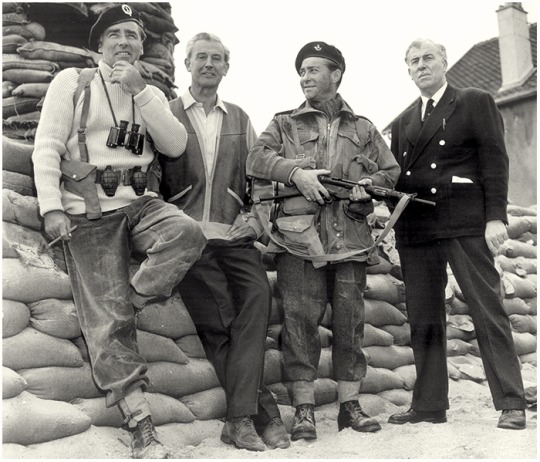
I never admitted to anybody during my entire military service that I had been an actor. I was terrified that I would be put in charge of Ensa [Entertainments' National Service Association]. Not even my closest friends knew I was an actor. I told them I was reading English at St Andrews University.
- Richard Todd
In his heyday in the 1950s and 1960s, Richard Todd was Britain’s leading matinee idol. If you love old movies, you’ll have seen Todd in one of his starring roles in “The Virgin Queen” opposite Bette Davis, “Stage Struck” with Marlene Dietrich, or “The Dam Busters” for which he won a Golden Globe Award. He was the tough little Scotsman in the wartime weepie “The Hasty Heart” and had audiences madly hunting for hankies.
Those were the days when Todd streaked across North American film screens as virtually every romantic hero from Rob Roy to Robin Hood. Ian Fleming chose him to play James Bond in “Dr. No” in 1962, but a schedule clash meant Sean Connery stepped into the role.
Little less known is the fact that he was also among the first British soldiers and the first Irishman to land in Normandy on D Day. More specifically, he participated in Operation Tonga during the D-Day landings in Normandy on 6 June 1944.
So it must have been surreal for Richard Todd the hearthrob actor to find himself playing Major John Howard in the epic movie ‘The Longest Day’ (1962) based on Cornelius Ryan’s book. Not least because he served with Howard and took part in the fighting at Pegasus Bridge that Major John Howard was tasked to secure on D Day.

Richard Todd was born in Dublin, Ireland, in 1919. His father was a medic in the British Army and, as his posting required, the early years of his life were spent in India. The family settled in Devon upon their return to England, and Richard was educated at Shrewsbury Public School, in Shropshire. The theatre was his first love, and he furthered his dramatic skills at the Italia Conti school, thereafter moving to Scotland where he helped to form the Dundee Repertory Theatre.
When War was declared, Todd went to St. Andrew's University on the following day to volunteer. He was not a member of the University, but he not only convinced the selection unit that he was, but also added that he had been reading English there for six months, and that he had obtained a Cert A in his school cadet corps; a key point to being accepted as an officer. Despite success in passing off this invented career, Todd was to be disappointed by a lack of interest in him thereafter.

Becoming increasingly desperate to get into the War before it ended, he sent numerous letters to the War Office to press his case, which, in June 1940, was finally noticed.
Accepted by the King's Own Yorkshire Light Infantry, Todd went to Sandhurst to receive his officer training. He had a very lucky escape here when he was in a corridor on the second floor of a building when it was hit by a bomb, and he was blown into the garden outside by the blast. He got to his feet in the darkness and did not feel particularly affected by it, but an examination by torchlight revealed that his whole body was covered in blood from numerous small wounds.
A spell his hospital delayed his passing out from Sandhurst until early 1941. Celebrating in London, he narrowly avoided death again when he found his usual haunt, the Cafe de Paris, was too crowded to admit him and so he went elsewhere; it was hit by a bomb that same night and 84 people were killed.
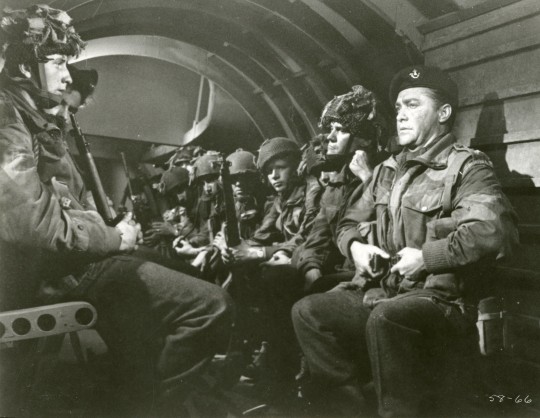
His Battalion, the 2nd/4th Battalion The King's Own Yorkshire Light Infantry, was posted to XII Corps in defence of Kent, where a German invasion if it came would almost certainly land. Todd was given command of the infantry in the Dymchurch Redoubt, a fort of the Napoleonic era mounting two six-inch guns.
In the event of an invasion, this would certainly have been a primary target for the enemy, and those manning it were told that, with the main defensive line far to their rear, they would be left to fight to the end. General Montgomery commanded XII Corps at this time, and his characteristic emphasis on training and preparedness led to the formation of the first Battle Schools. Richard Todd attended one of these, and the experience allowed him to run his own School when, in December 1941, he was sent to Iceland with the 1st/4th King's Own Light Infantry to be trained in arctic and mountain warfare.
Returning to England in September 1942, he eventually ended up in the 7th (Light Infantry) Parachute Battalion of the 6th Airborne Division. He was among troops of the 7th (Light Infantry) Parachute Battalion who, at 00:40 hours on 6 June 1944, landed behind the Normandy beaches in a cornfield, perilously close to tracer fire.
Todd scrambled into a wood and with 150 other paratroopers reached Pegasus and Ranville bridges, vital crossings to allow Allied forces to break out from the beachheads into Normandy. They had been seized by a glider force from the Ox and Bucks Light Infantry under the command of Major John Howard, who needed reinforcements to fend off ferocious German attacks.
In his memoirs, Caught in the Act, Todd would write of the carnage, “There was no cessation in the Germans' probing with patrols and counter-attacks, some led by tanks, and the regimental aid post was overrun in the early hours. The wounded being tended there were all killed where they lay. There was sporadic enemy mortar and artillery fire we could do nothing about. One shell landed in a hedge near me, killing a couple of our men.”
Todd would go on and see action at the Battle of the Bulge and push into the Rhine into Germany. After VE day, his division returned to the UK for a few weeks, then was sent on counter-insurgency operations in Palestine. During this posting he was seriously injured when his Jeep overturned, breaking both shoulders and receiving a concussion. He returned to the UK to be demobilised in 1946.
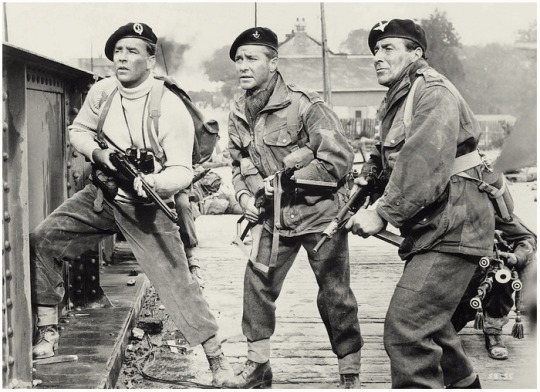
In 1962, Todd was given the part of Major John Howard in the film adaptation of Cornelius Ryan's book about the D-Day landings, ‘The Longest Day’ (1962). Due to the nature of cinema, it was impossible for the film to give a thorough reflection of the role of the 6th Airborne Division during the Invasion, and as such their activities were solely represented by a reconstruction of the capture of Bénouville Bridge by Howard's coup-de-main force. Although briefly mentioned, the role of the 7th Battalion in the defence of the western bridgehead was largely ignored, and so it appeared as if the defence of the bridge rested only on Howard's men.

Naturally, the omission of their fierce defence of Bénouville caused some resentment amongst veterans, not least because one of their own was championing this re-working of history. Todd, however, regarded ‘The Longest Day’ (1962) as a film rather than a documentary, and his part in it was simply that of an actor doing as he was told.
Richard Todd would never have guessed, that in 17 years since he was on Pegasus Bridge as a paratrooper that he would standing there again as an actor portraying Major John Howard who was given the order: 'Hold,… until relieved'. It had to be Richard Todd’s 'twilight-zone' moment.
The ‘relieve’ for Howard had to come from Lord Lovat and his troops, who had landed on SWORD Beach, and were legging it towards Pegasus Bridge.
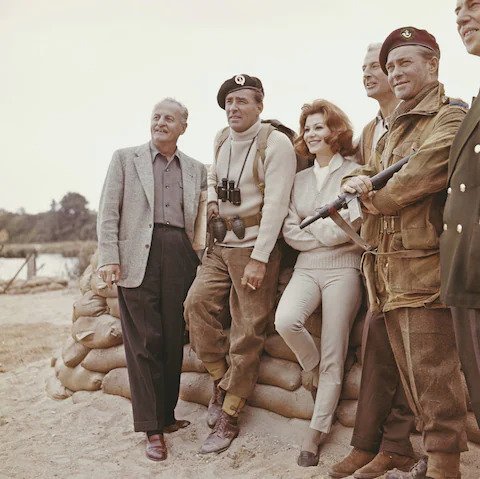
Before the shooting of the scenes were started at Pegasus Bridge, the film producer of The Longest Day, Darryl F. Zanuck, had the real life Lord Lovat and Major John Howard brought over to meet the men who were going to portray them (Peter Lawford portrayed Lord Lovat). The men had not seen each other since 6 June 1944.
Photo (above). From L-R: Peter Lawford, Lord Lovat, Richard Todd, Major John Howard.
#todd#richard todd#quote#british army#D Day#DDay#Normandy#pegasus bridge#war#second world war#major john howard#parachute#battle#actor#soldier#paratrooper#the longest day#film#movie#cinema#britain
109 notes
·
View notes
Photo


LITERARY LOVE: J.D. SALINGER & OONA O'NEILL
Bright, pretty and spoiled, and cute as hell. I’m crazy about her. - J.D. SALINGER, 1941
He was out of his mind with adoration for this woman. - HARVEY JASON
She was the love of his life, the one woman whom he loved more than any other. He never recovered. - PAUL ALEXANDER
It was a tremendous love story. They truly loved each other. - LEILA HADLEY LUCE
Oona was the movie always in his mind. - DAVID SHIELDS
Your U.S. Army hero kisses you on the cheek, on your right eye, on your left ear and then feverishly travels down to your neck. Little Oona, you save my life several times a day and YOU DON'T HAVE ANY IDEA ABOUT IT. - MANHATTAN'S BABE
I would marry Oona tomorrow if she would have me. - J.D. SALINGER
#historicwomendaily#oona o'neill#j.d. salinger#literature#i don't know what the fuck baba o'riley is actually about but in my mind it's always been about catcher in the rye#especially this line but also the general *~teenage wasteland~* of it all#i really hate how salinger scholars love to rip oona apart like jerry was just la la la traipsing across the western front#this guy literally stormed the beaches at normandy with the manuscript for catcher in the rye in his back pocket#he fought in the battle of the bulge and LIBERATED DACHAU#and I’m supposed to believe oona was just some frivolous marshmallow he was hung up on for the rest of his life?#a man who’s seen the face of hell itself wouldn’t spend 70 years pining over a barbie doll#i know she had her faults but she must have been a phenomenal girl if she brought someone as brilliant as salinger to his knees#‘there are still a few man who can love desperately.’
148 notes
·
View notes